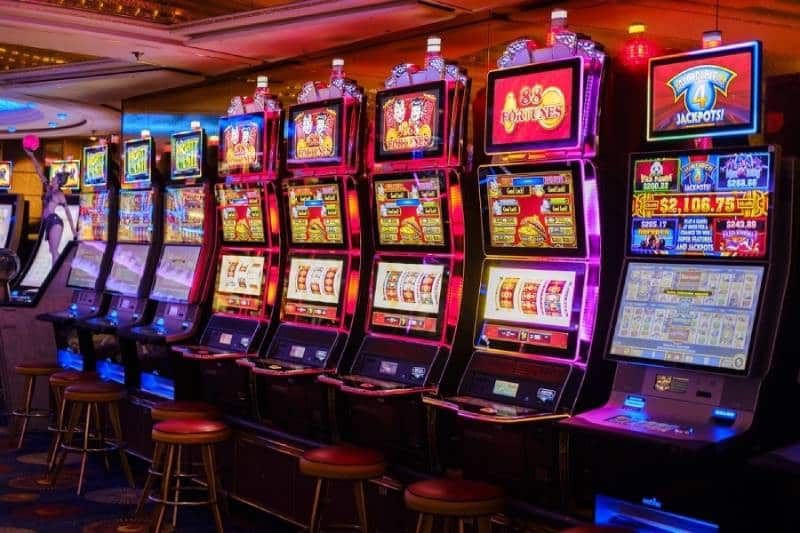Do Indian Tribes Own All US Casinos?
An information sheet and analysis of the laws governing the ownership of US casinos by Native American tribes.

Due to a lack of knowledge regarding Native American gambling, there are some common misunderstandings about Indian casinos. If you love playing at US casinos, you should know how tribal casinos operate and how they vary from other casinos.
Learn about Indian casinos, their ownership and management fundamentals, and a comparison between them and commercial casinos in this article.
Native-American Casino Ownership
Indian casinos usually referred to as tribal casinos, are places of gambling constructed on US tribal reserve territory. The first Native American casino, once a bingo hall, was constructed in Florida in 1979. Due to its success, around 150 tribes followed suit and opened casinos and bingo halls in the years that followed.
The Indian Gaming Regulatory Act (IGRA), legislated by the US Congress in 1988, led to the invention of the National Indian Gaming Commission (NIGC). All high-stakes tribal casinos under Classes II and III are governed by the NIGC. According to the IGRA, the following three gaming categories:
Class I: Tribal administrations alone oversee traditional ceremonial and social games with little stakes.
Class II: non-banked games such as bingo pull tabs, poker, punch boards, etc., controlled by tribal governments but subject to NIGC regulations and local laws.
Class III: Blackjack, roulette, craps, and slot machines are all classified as Class III games, and tribal authorities must abide by the IGRA’s stringent restrictions for Class III gaming establishments and operations.
Due to this, only states with legalized gambling may host tribal casinos.
Do Indian tribes own all US casinos?
Indian tribes do not own every casino in the US. First, thousands of commercial casinos run within states are governed by federal law. Large private gaming firms like Caesars Entertainment and Las Vegas Sands Corp. own these casinos.
Second, depending on the authority of the tribe, even Indian casinos operate differently from one another. Although the tribal government still runs some big Native American casinos, others have contracts with commercial casino operators to run them professionally. One illustration is the management of Harrah’s Cherokee by Caesars Entertainment, a tribal casino resort in Cherokee, North Carolina.
Do all Indian tribes run a casino?
Data from the NIGC shows that not all federally recognized tribes in the US run casinos. There will be 574 recognized US tribes by 2020, and the government will authorize 248 to run tribal casinos. Some of them are in charge of numerous casinos. There are now 524 tribal casinos operating in 29 states in the US.
Additionally, 460 organizations are not permitted to open Native American casinos since they do not meet the IGRA’s definition of an “Indian Tribe.”
However, only a third, or around 72–74 Indian casinos, can make payments. The NIGC claims that only those who have demonstrated that they use their revenues to support their tribe’s government, run social initiatives in their neighborhoods, and support the growth of their economy are eligible to receive official reimbursements.
Lastly, according to the regulatory board’s report, Indian gaming’s gross income for the fiscal year 2020 is $27.8 billion.
What Makes Indian Casinos Different From Commercial Casinos?
In contrast to the 462 commercial casinos now open in the US, there are 525 tribal casinos as of 2020. Here are the major dissimilarities between the two, so you can see how they differ from one another:
RTP Rates
Commercial casinos must abide by the minimal legal return-to-player rate, or RTP, requirements set forth by each state. For instance, Nevada casinos’ slots need an RTP of at least 75%.
However, because state laws do not oversee Native American gambling, Indian casinos may provide a lower RTP than their commercial counterparts. In contrast to normal casinos, which are required to send a copy of their payback percentage to their regulating board every month, they are not required to produce any reports on their RTP.
However, a few Indian casinos have already promised to match the RTP rates of commercial casinos. Additionally, these tribal casinos still need to compete because reduced RTP rates will probably result in fewer patrons visiting them.
Games Availability
Each native gambling establishment’s games may differ due to the gaming categories that the IGRA has established for Indian casinos. As long as they have completed a compact, video poker and slot machines are the most popular games you’ll encounter.
Class II or Class III casinos make up the majority of Indian gaming establishments. Bingo, pull tabs, lotteries, poker, and other games with multiple players, where the winnings are based on the number of participants and the cost of the tickets, are permitted to be offered by those in Class II. Class III tribal casinos, on the other hand, are permitted to provide Vegas-style gaming, much like commercial casinos.
Keep in mind that the availability of the games may change based on state laws governing commercial casinos.
Class II Slot Machines
Tribes under Class II must come up with methods to still deliver a Vegas-like experience while adhering to the rules since there are gaming categories for Native American casinos that can restrict the games they provide. As a result, they had the idea of developing slot machines that could pass for bingo, a Class II game.
Due to this, commercial casinos can only have class III slot machines, whereas only Indian casinos can have class II machines. Slot machines in Class II and Class III share the same appearance, and the first features a little window on the side that displays the bingo patterns, which is the key distinction between both. These kinds of games are unlikely to be found in American internet casinos.
Start by pressing the spin button to begin playing Class II slots. You will then be electronically combined with other players who have pressed the button and are simultaneously playing. There is no maximum for the game, but it must have two minimum players. In essence, these slot machines aren’t slots at all; they function just like electronic bingo machines but are designed to resemble Vegas slots.
Establishment Amenities
Indian casinos are far larger than even the busiest casinos in Las Vegas and Atlantic City in terms of physical size. This is mainly because a tribal casino can add more amenities and services. After all, they can build a hotel and casino on more expansive native land. There are more meeting spaces, spas, swimming pools, gyms, and shops in Native American casinos.
Commercial casinos, however, are only permitted in certain locations in crowded cities close to sizable shopping malls and residential neighborhoods.
Additionally, Indian casinos benefit from having a larger gaming area since they may add additional table games and slot machines to the gaming floor.
Knowing more about Native American gambling and the distinctions between commercial and Indian casinos can help you decide which venue is most advantageous for you. From a customer’s perspective, there are no discernible distinctions between the two sorts of casinos, especially if you’re simply searching for a place to gamble for entertainment and to pass the time.
Also Read: Best Shows in Las Vegas
100% up to €500 or 5 BTC




